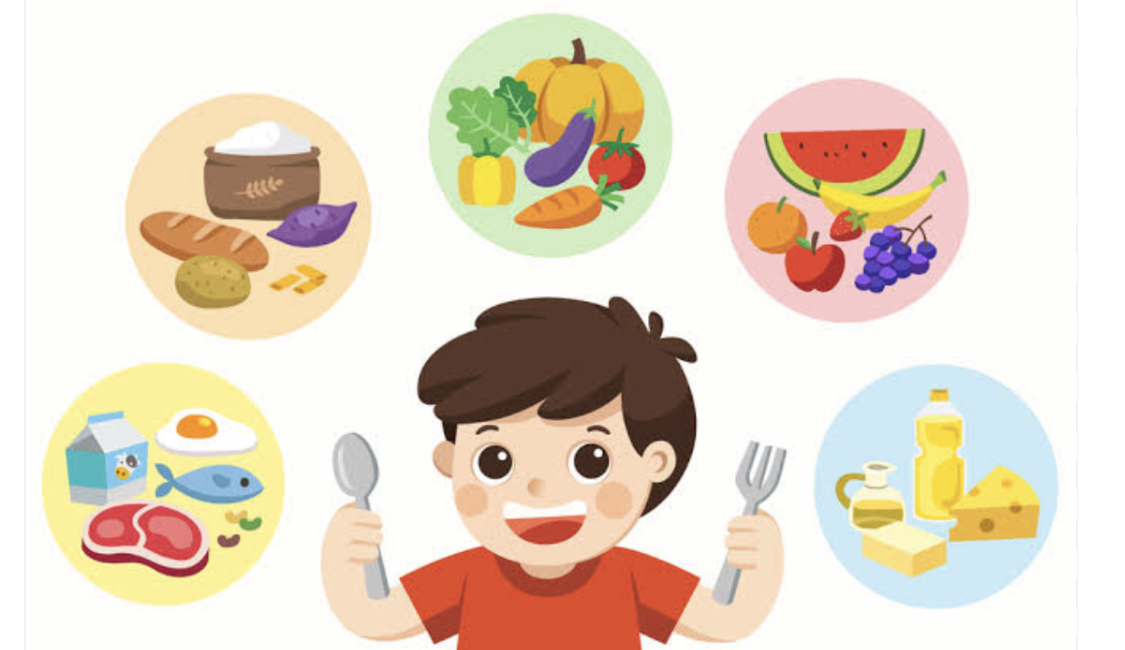NUTRITIONAL NEEDS ACROSS PEDIATRIC AGE GROUPS: NCLEX STUDY GUIDE

Introduction
Pediatric nutrition is a crucial aspect of child development, influencing growth, immunity, cognitive function, and overall health. However, nutritional needs change dramatically as children grow from infancy to adolescence. Understanding these differences is essential for nurses preparing for the NCLEX, as questions on pediatric nutrition often appear on the exam.
This guide will break down the key nutritional needs for different pediatric age groups and provide practical strategies for ensuring adequate intake. By the end, you’ll feel more confident answering NCLEX questions about pediatric nutrition—and maybe even impress a few parents along the way.
1. Nutritional Needs in Infants (0-12 Months)
Infants grow at an astonishing rate, doubling their birth weight by six months and tripling it by one year. Proper nutrition during this period is critical for brain development and immune function.
• Breastfeeding: The gold standard for infant nutrition, breast milk provides essential nutrients, antibodies, and digestive enzymes. The American Academy of Pediatrics (AAP) recommends exclusive breastfeeding for the first six months.
• Formula Feeding: When breastfeeding isn’t an option, iron-fortified infant formula is the best alternative.
• Introduction of Solids: Around 4-6 months, infants can start eating pureed foods, beginning with iron-rich sources like fortified cereals, pureed meats, and vegetables.
• Common Deficiencies: Iron and vitamin D are key concerns. Supplementation may be necessary for breastfed infants.
2. Toddlers (1-3 Years): Transitioning to Solid Foods
Once those little teeth start coming in, toddlers begin transitioning to a more varied diet. However, their eating habits can be unpredictable (cue the toddler throwing their peas on the floor).
• Nutritional Needs: Calcium and vitamin D are essential for bone growth, while iron supports cognitive development.
• Balanced Diet: Encourage whole foods—fruits, vegetables, whole grains, dairy, and lean proteins.
• Avoid Common Pitfalls: Limit sugary snacks and excessive milk intake (more than 24 ounces per day can lead to iron deficiency anemia).
• Portion Sizes: Small stomachs mean toddlers need frequent, nutrient-dense meals and snacks.
3. Preschoolers (3-5 Years): Expanding the Palate
Preschoolers are notorious for their strong food preferences (and their ability to reject anything green). However, this is a critical time for developing healthy eating habits.
• Protein and Iron: Continue to prioritize lean meats, eggs, and legumes.
• Fiber: Helps prevent constipation, a common issue in this age group. Encourage whole grains, fruits, and vegetables.
• Hydration: Many preschoolers don’t drink enough water. Encourage water over sugary juices.
• Food Exploration: Make mealtime fun by involving kids in cooking and offering a variety of colors and textures.
4. School-Age Children (6-12 Years): Fueling Growth and Learning
With school, sports, and increased independence, nutritional needs shift again. This age group requires a well-balanced diet to support physical and cognitive growth.
• Macronutrients: A mix of carbohydrates, proteins, and healthy fats provides sustained energy.
• Calcium and Vitamin D: Essential for bone development, especially as children become more active.
• Limit Processed Foods: School lunches and snacks should focus on whole foods rather than processed options high in sugar and sodium.
• Encouraging Healthy Habits: Teaching kids to make good food choices sets the foundation for lifelong health.
5. Adolescents (13-18 Years): The Final Growth Surge
Teenagers experience rapid growth spurts and hormonal changes, making proper nutrition vital. However, this is also the age of fast food, skipped meals, and fad diets.
• Increased Caloric Needs: Depending on activity level, adolescents require 2,000-3,000 calories per day.
• Protein for Muscle Growth: Essential for teens involved in sports and physical activity.
• Iron for Girls: Menstruating adolescents are at higher risk for iron deficiency anemia. Lean meats, leafy greens, and fortified cereals help maintain levels.
• Calcium and Vitamin D: Many teens fall short in calcium intake, increasing the risk of osteoporosis later in life. Dairy, fortified plant-based alternatives, and leafy greens are key.
• Encouraging Healthy Choices: Teaching teens to prepare simple, nutritious meals can foster independence and lifelong health habits.
6. NCLEX Practice Questions
1. A nurse is providing dietary education to the parents of a 6-month-old infant. Which food should be introduced first?
a) Whole milk
b) Honey
c) Iron-fortified cereal
d) Egg whites
Answer: c) Iron-fortified cereal. Infants require additional iron at this stage, and cereals are an ideal first food.
2. A toddler drinks excessive amounts of cow’s milk but eats little solid food. What nutritional deficiency is most concerning?
a) Vitamin C deficiency
b) Protein deficiency
c) Iron deficiency anemia
d) Calcium deficiency
Answer: c) Iron deficiency anemia. Drinking too much milk can interfere with iron absorption and lead to anemia.
3. A school nurse is teaching parents about balanced nutrition for their 10-year-old child. Which recommendation is most appropriate?
a) Avoid all carbohydrates to prevent weight gain
b) Focus only on protein intake for muscle development
c) Encourage a mix of fruits, vegetables, proteins, and whole grains
d) Allow unlimited processed snacks for energy
Answer: c) Encourage a mix of fruits, vegetables, proteins, and whole grains. Balanced nutrition supports healthy growth and development.
4. An adolescent female reports fatigue and frequent headaches. Her diet consists mainly of processed snacks. What deficiency is most likely?
a) Calcium deficiency
b) Iron deficiency
c) Vitamin A deficiency
d) Potassium deficiency
Answer: b) Iron deficiency. Teenage girls are at higher risk due to menstruation, and a diet lacking in iron-rich foods can contribute to fatigue.
5. A parent asks how to encourage a picky preschooler to eat vegetables. What is the best nursing advice?
a) Force the child to eat vegetables before offering other foods
b) Hide vegetables in other foods like smoothies or sauces
c) Only offer vegetables once a week
d) Give candy as a reward for eating vegetables
Answer: b) Hide vegetables in other foods like smoothies or sauces. Making veggies more appealing can help picky eaters consume essential nutrients.
Conclusion
Understanding pediatric nutrition is essential for nurses, as it directly impacts a child’s growth, immunity, and overall health. Whether it’s an infant needing iron, a toddler refusing veggies, or a teenager skipping meals, each stage comes with unique challenges. By mastering these nutritional principles, you’ll be well-prepared for the NCLEX and, more importantly, for guiding families toward better health.
Now, go ace that exam—and maybe treat yourself to a healthy snack while you’re at it.






